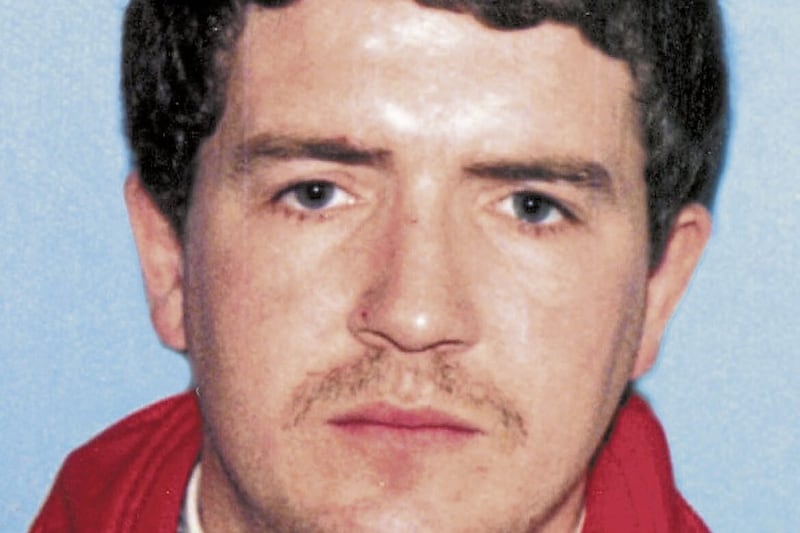An alleged member of the Loyalist Volunteer Force (LVF) ‘Army Council’ has been named during an inquest hearing.
Seamus Dillon (45), a former republican prisoner, was shot dead by the LVF as he worked on the door at the Glengannon Hotel, near Dungannon, in December 1997.
It was previously thought that the father-of-three, from Stewartstown in Co Tyrone, was gunned down in revenge for the INLA killing of LVF founder Billy Wright inside the H-Blocks hours earlier.
However, it has now emerged that police intelligence documents indicate the attack at the hotel was pre-planned.
Details emerged during an open Public Interest Immunity (PII) inquest hearing in Belfast on Friday, during which lawyers for the Dillon family raised concerns over the disclosure of information from state agencies.
PII certificates are used by state agencies to conceal information they don’t want the public to see.
The open inquest session was followed by a closed hearing, which legal representatives for relatives of the dead are not allowed to attend.

During the open hearing Des Fahy KC, acting for the Dillon family, raised concerns about redactions in information disclosed by MI5, including a section headed “LVF Army Council pen pics”.
“All bar one of these has been redacted,” he said.
“And there is a named individual, Stuart Kirk.
“The question I ask on behalf of the next of kin is ‘why can’t the other redactions of those pen pics be rolled back?’
“If they are in the LVF Army Council, what arises in relation to PII in relation to those individuals, that doesn’t arise in relation to Mr Kirk?
“And the obvious question is, is it because they are state agents or informers? Is that why PII has been inserted in relation to those pen pics?”
It is considered unusual for alleged leadership figures in paramilitary groups to be identified in documents provided by state security agencies to inquests.
The Irish News understands the document, which is partially redacted, is marked “intelligence - not for disclosure” and includes a photograph.
The document describes Kirk as the “OC (Officer Commanding) Dungannon LVF”.
It reveals that the loyalist first came to the attention of the police in 1987 when he was involved in a stone-throwing incident in Dungannon.
In 1990 he was arrested with two other men after a quantity of drugs were seized in the Eastvale Avenue area of the town.
According to the MI5 document which was provided for the inquest process but was not read out in full at Friday’s hearing, Kirk was thought to be a member of the UVF in Mid Ulster up until 1997.
However, by mid ‘97 he was “identified as OC Dungannon LVF”.
After the murder of Mr Dillon, Kirk was actively targeted by both PIRA and INLA, the document states.
Kirk is described as being “most active” in Portadown and the document confirms he was arrested for the murder of Richard Jameson near the Co Armagh town in 2000, before being released without charge.
Jameson, who is described by MI5 as “OC Mid Ulster UVF”, was shot dead during a bitter UVF-LVF feud.

The LVF was formed in 1996 by Portadown loyalist Billy Wright after he was expelled from the UVF by its leadership.
In March 1997 suspected state agent Wright was sentenced to eight years in prison after being tried for intent to pervert the course of justice and making a threat to kill.
His close ally Mark ‘Swinger’ Fulton, who has been named in court papers as a suspect in the murder of Co Derry GAA official Sean Brown in May 1997, took on a senior role in Wright’s absence.
According to the Billy Wright Inquiry report, Fulton “assumed nominal leadership of the LVF”, however, Wright “continued to be in practice the acknowledged and undisputed leader even when in prison, and he continued to direct operations from his prison cell”.
Fulton is thought to have taken his own life Maghaberry Prison in 2002.






